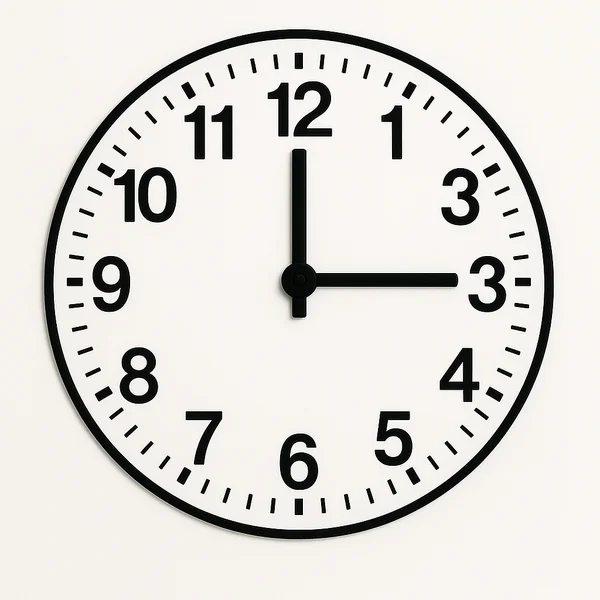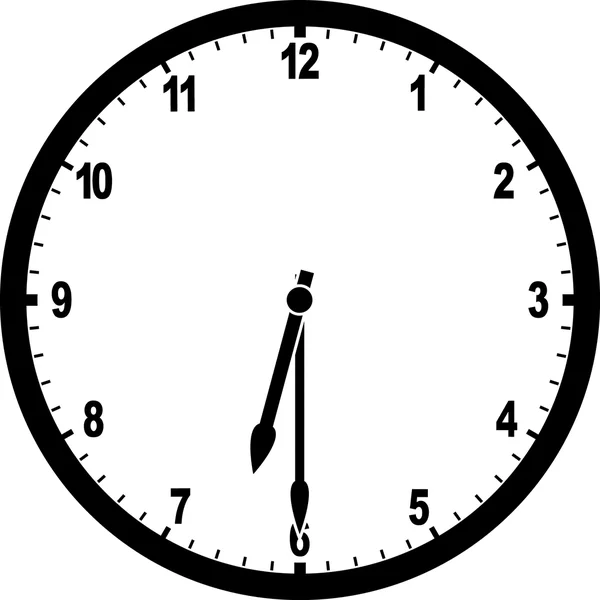Visualizing Time on an Analog Clock: A Clear Guide
Ever wondered what does time look like on an analog clock? For many, especially young learners, picturing how the hour and minute hands align for specific times can be tricky. Understanding the analog clock face isn't just about telling time; it's about developing a crucial sense for how time flows. This guide helps you clearly visualize time, breaking down common clock face examples. And the best part? You can practice any time with our interactive tool!
Why Visualizing Analog Clock Time Matters
Being able to accurately visualize time on an analog clock is a fundamental skill. It helps grasp concepts like time duration, "half past," and "quarter to." When you can mentally picture the clock hands, you're building a stronger internal clock and improving time management. This is vital for students, underpinning mathematical concepts and daily scheduling. So, how do you read an analog clock by visualizing? Let's see some time examples.
Key Time Examples: What They Look Like on an Analog Clock Face
Let's look at common times and break down the hour hand position and minute hand position.
What 3:00 (Three O'Clock) Looks Like on an Analog Clock
How do I see 3:00 on an analog clock? This is a straightforward time.
-
Understanding Hour Hand Position at 3:00 on the Clock Face At 3:00, the shorter hour hand points directly at the number 3.
-
Minute Hand Placement for O'Clock Times For any "o'clock" time, the longer minute hand points directly up at the 12, marking zero minutes past the hour.
-
Visual Example: The 3:00 Analog Clock Face

Seeing this clock face example is clear. You can try setting 3:00 to see for yourself!
Visualizing 6:30 (Half Past Six) on an Analog Clock
Now, what does 6:30 look like on a clock face? This involves the hour hand position.
-
Hour Hand Movement for Half-Past Times (e.g., 6:30) At 6:30, or "half past six," the hour hand is halfway between the 6 and the 7, showing 30 minutes have passed.
-
The Minute Hand at the 30-Minute Mark on the Clock Face The minute hand at 6:30 points directly down at the 6 (30 minutes).
-
Analog Clock Example: Showing 6:30 Clearly

This time visualization is key for "half past." Our online clock tool can show this perfectly.
Seeing 9:15 (Quarter Past Nine) on an Analog Clock Face
Let's consider 9:15. How to visualize 9:15 on analog clock?
- Locating the Hour Hand for Quarter Past 9:15 At 9:15, "quarter past nine," the hour hand will have moved a little past the 9.
- Minute Hand at the 15-Minute Position: Visualizing Quarter Past The minute hand points at the 3, signifying 15 minutes past.
How 2:45 (Quarter To Three) Appears on an Analog Clock
This can be tricky! What does 2:45 (quarter to three) mean on an analog clock?
-
The Tricky Hour Hand: Approaching the Next Hour at 2:45 At 2:45, "quarter to three," the hour hand is much closer to the 3 than the 2.
-
Minute Hand Pointing to 45 Minutes (Quarter To) on the Clock Face The minute hand points at the 9 (45 minutes past the hour).
-
Visualizing 2:45: An Analog Clock Example

This highlights why time visualization is crucial. You can explore 2:45 visuals with our tool.
Decoding 7:23 (Seven Twenty-Three) on an Analog Clock
A specific time: How to read specific minutes like 7:23 on an analog clock?
-
Pinpointing the Hour Hand Between Numbers for 7:23 At 7:23, the hour hand is past the 7, but not quite halfway to the 8.
-
Reading Specific Minutes Like '23' on the Analog Clock Face The minute hand is three small tick marks past the 4 (which is 20 minutes).
-
Analog Clock Face: A Clear View of 7:23 This shows how every minute counts. For precise time visualization, our clock practice tool is perfect.
Tips for Visualizing Any Time on Your Own Analog Clock
Improve visualizing time on any analog clock with these tips:
-
Focusing on the Hour Hand First Identify the hour hand position first to determine the hour.
-
Counting by Fives for the Minute Hand For the minute hand position, remember each large number is 5 minutes.
-
Practice with an Interactive Analog Clock The best way is practice! Use an interactive clock, like our learning clock online. Drag the hands, see the digital time, and understand how analog clock hands move. This makes learning analog clock concepts easier.
Master Analog Clock Visualization with Practice
Understanding what [time] looks like on an analog clock is a valuable skill. By studying clock face examples and hand movements, you can confidently visualize time.
-
Key Takeaways for Visualizing Clock Times Check the hour hand, then count by fives for the minute hand. Note how the hour hand moves between numbers.
-
Your Next Step: Practice with Our Interactive Analog Clock! Mastering time visualization is simpler with good tools. We encourage you to visit our interactive clock and use our free learning resource. Set any time, move hands, and test yourself. It’s great for students, parents, and teachers for telling time effectively!
Visualizing Analog Clock Times Answered
Common questions about visualizing time on an analog clock face:
-
How do I know where the hour hand points when it's 'half past' an hour?
At "half past" (e.g., 6:30), the hour hand is exactly halfway between the current and next hour number. You can see this on our clock for learning.
-
What's the easiest way to visualize specific minutes (not just 5s) on an analog clock?
Find the closest 5-minute mark, then count the small tick marks. Practicing this on an online teaching clock helps.
-
Can your interactive analog clock tool show any custom time I want to visualize?
Yes! Our interactive time tool lets you drag hands to display any custom time. It’s perfect for visualizing time and reading clocks.
-
Why does the hour hand move between numbers on an analog clock face, not just point directly at them?
The hour hand moves continuously. As the minute hand travels, the hour hand gradually moves towards the next hour, showing time progression. Experience this movement here!